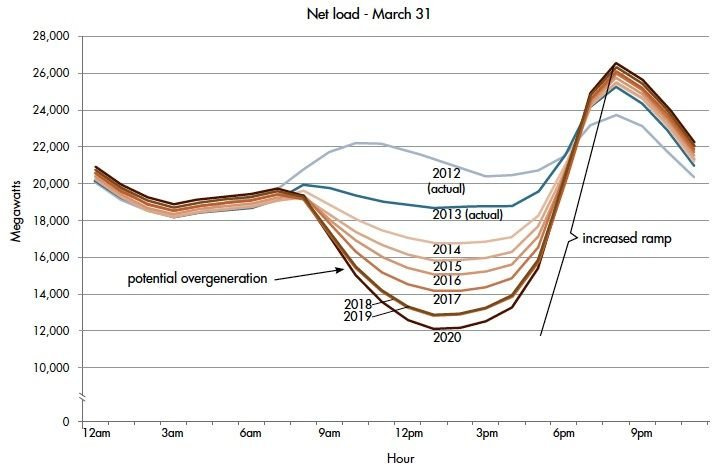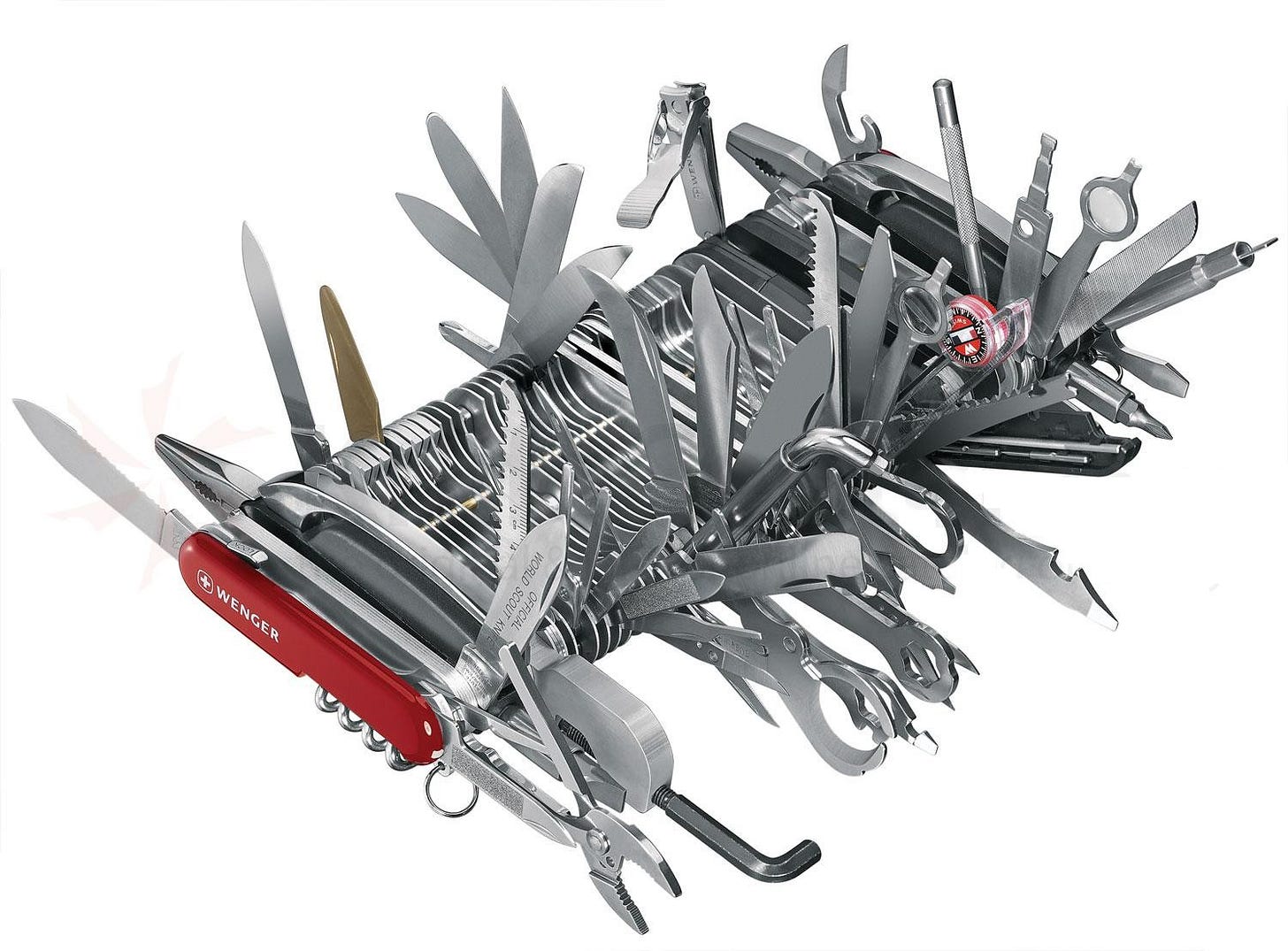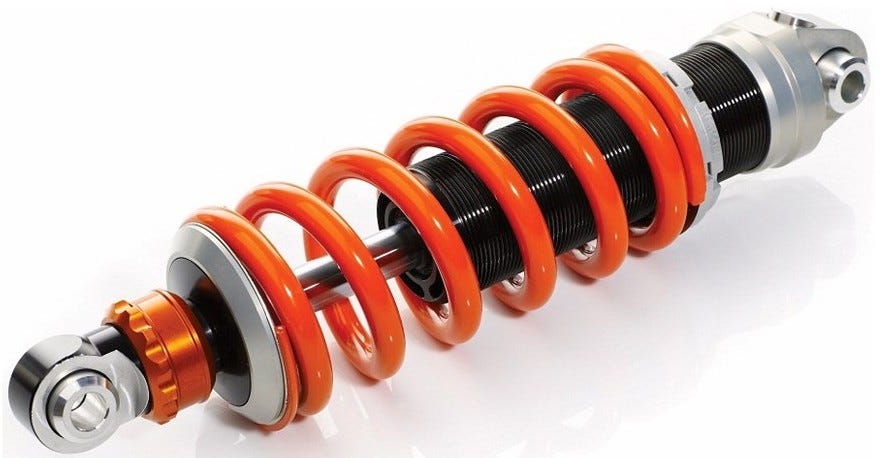The Grid Needs Shock Absorbers
Renewables don't just inject power, they inject volatility too.
Electric power grids were designed in the 20th Century to be closely balanced load-following systems using dispatchable generation and multiple nested loop controls. This means that electrical generators are controlled to provide adjustable amounts of power on command and a sophisticated nested loop multi-time scale control system makes an array of generators match supply with load closely while the system remains dynamically stable. The nested loops work on time scales ranging from sub-second [primary generator control], to 4-6 seconds [secondary generator control] to five minutes (balance) and 15 minutes (interchange) [tertiary generator control] to hourly [dispatch]. All of this is connected to real time electricity markets (where they exist) and to multi-time-scale planning.
An aspect of this arrangement is that, traditionally, demand (load) aggregated at the distribution feeder head end level and above had been fairly predictable and electric utilities had developed great skill in forecasting dynamic load under various weather conditions. Hence the dynamic load-following grid worked well for decades.
The introduction of wind and solar electric generation at grid scale massively disrupted all this. Not only do large scale wind and solar farms randomly inject variable jolts of power into the grid, but behind-the-meter solar panels cause the grid to see unpredictable fluctuations in apparent load, further disrupting the smooth operation of the grid.
Here is an analogy for the 20th Century grid: the grid is a large very shallow pan with many adjustable faucets (generators) pouring water in and many pipes (loads) taking water out. We adjust the faucets so that the shallow pan is filled to just below the brim. We do not want it to overflow (that would waste generator fuel) and we do not want it to run low because the pipe flows would stop (the loads would lose power and black out). The control system mentioned above keeps all the inlet faucet settings just right to maintain the pan level (balance, in grid terms).
With the introduction of large scale solar and wind, now we have other faucets dumping water into the pan at irregular intervals in random amounts. We can turn down the regular faucets to make room for the new water injections, but we cannot adjust them fast enough to deal with the random fluctuations of the new water sources. Making thing worse, new solar faucets (rooftop solar panels) are injecting water far downstream in the pipes, making the draw on the pipe outlets of the shallow pan highly volatile. Keeping the level of water in the pan just right has become MUCH more difficult, especially if we throw away some of the conventional faucets, as has been happening. The problem is injected power flow volatility.
Even when the solar generation injection can reasonably be forecasted, such as when solar generation fades out with the setting sun, it still creates problems. The problem with solar generation now known as the duck curve was first identified in California. When solar generation fades out as evening comes on, it is necessary to ramp up some type of conventional generation such as gas-fired turbines to replace what is being lost from the setting sun. The name “duck curve” comes from the shape of the generation profile needed to compensate for the fading solar generation. However, it has proven very difficult to provide sufficient fast rampable (meaning dispatchable) generation to compensate for large scale solar fade. This is why California has asked electric vehicle owners to avoid charging between 4 pm and 9 pm - which happen to be prime hours for electric vehicle charging at home!
The duck curve issue has begun to show up in other parts of the US where solar generation is on the rise.
In general, consumers have been asked degrade the quality of their lives to accommodate the limitations of the emerging renewables-based grid; this means essentially exporting grid constraints onto the electricity users that the grid was supposed to serve and make them pay more for it. Examples include expecting users to change electricity usage patterns (demand response) or reduce electricity usage outright. In Massachusetts, the state government is now telling residents to dry their clothes outdoors, even in the winter.
In regions where electricity prices are determined by real time wholesale electricity energy markets, excess wind generation occasionally causes wholesale electricity prices to go negative, meaning that the utility is paying customers to take electricity. Ultimately, customers end up paying for that in the long run. It is certainly possible to curtail solar or wind generation when such excesses from renewable generation occur, but the owners/investors of such facilities object strenuously to this.
So how do we handle the integration of wind and solar generation into the existing US power grid? When Terry Boston was head of PJM, he was fond of saying, “If you like wind [power], you better love storage.”
Unfortunately, as technologies for bulk storage of electrical energy at grid scale began to become available, storage was treated as if it was bulk generation but with the ability to have negative output (meaning take in energy from the grid as well as inject it into the grid) but this approach failed to recognize much of the potential of bulk grid electric energy storage. This happened because electricity market optimization software had no other means to represent the storage that was being forced into the grid. Subsequently, production cost models were used to evaluate storage economics, but this again completely missed the real value of grid storage. Next, various parties suggested that storage could provide a range of services to the grid (never mind that there is not much money in this and there are already incumbent means to do it) and so storage began to be treated like an all purpose tool.
Purveyors of grid storage have proposed to stack services to be supplied by their grid-attached storage devices and be paid for each on the presumption that such services were provided, without even any metering of them.
In 2015, I testified before the US Senate Committee on Energy and Natural Resources on the state of technical innovation for the electric grid. One of the points I made was:
“There is an emerging sense that the combination of fast bilateral storage, flexible grid interface mechanisms, and advanced optimizing control is a general purpose grid element as fundamental as power transformers and circuit breakers. One of the most significant impacts of storage will be the ability to decouple generation and load volatilities.”
Basically, the new grid component we need to facilitate renewables integration has a single function:
Rather than acting as generators with negative outputs or suppliers of grid services, storage should be the shock absorber for the grid. Its singular function is to limit or eliminate the propagation of power flow volatility through the grid, regardless of the source. Once this is understood, the issues of who owns the storage, how it is paid for, where it is located, and how it is controlled become quite clear.
The type of grid storage needed for power flow volatility control consists of a triad of technologies:
energy storage - typically electrochemical batteries but can be other technologies (flywheels, electric or magnetic fields, etc.) as long as the storage works in what we termed reflexive mode (we called it bilateral for the Senate testimony) and is capable of fast (millisecond level) response. In reflexive storage, electric energy from the grid is stored in the device and later re-injected back into the grid as electricity. Other forms of storage may take electricity and hold it for other uses such as space heat. Such storage is termed transitive and while valuable, is not of interest here.
power electronics - capable of high voltage AC/DC, DC/DC, and DC/AC conversions and controllable power flow with sub-microsecond response times, this technology is used for the grid interface in solar inverters as well as in voltage converters and regulators, stabilizers, and power flow controllers. Such technology is widely available today.
advanced control - digital controllers with advanced algorithms can extract maximum capability and flexibility from storage devices in the context of grid operations. When further combined with digital communications, advanced digital control can operate networks of storage devices very effectively to manage grid volatility (see Control of Embedded Bulk Electric Storage Networks for Operational Flexibility and Grid Resilience, PNNL-31430, June 2021, available on the PNNL Grid Architecture website).
So the rule is simple:
An electric grid that uses randomly variable energy resources (like wind or solar) MUST have shock absorbers to manage power flow volatility. The combination of fast reflexive energy storage, power electronics, and advanced controls comprise the technical basis for fast-acting grid shock absorbers.
Note that we are not talking about amounts of storage capacity big enough to carry the whole country’s electrical load for several days of wind drought or low solar availability, as has been suggested - that is simply not feasible. The amounts needed for shock absorbers is much less and are financially and technically feasible.
Oh, and one last comment: demand response (load turn down) is not storage, no matter what the data modelers claim.









Very elegant description. I love the range of technology & equipment (all existing to) that can be used to provide shock absorption. Just need to design our systems to use them.